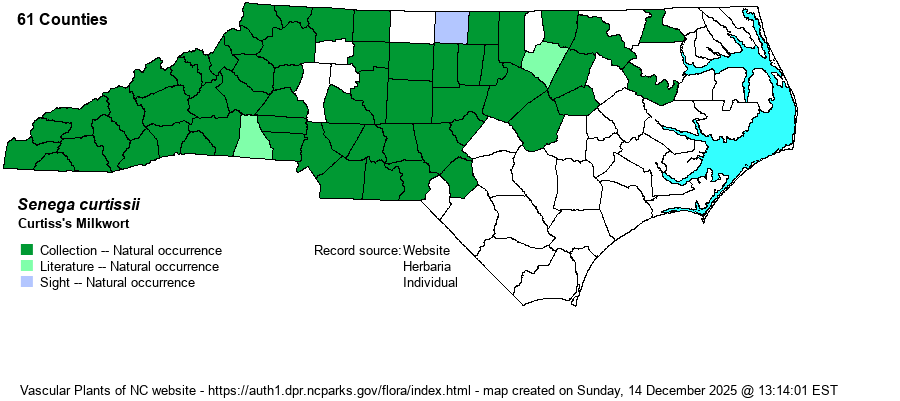| Author | (A.Gray) J.F.B. Pastore & J.R. Abbott | |
| Distribution | Throughout the Mountains and Piedmont; ranges sparingly into the western edge of the Coastal Plain.
This is a Southeastern species that ranges north to southeastern PA and southern OH, and south to southern GA and MS. | |
| Abundance | Frequent to common across the Mountains and Piedmont, but rare along the western Coastal Plain. This is the most numerous member of the genus in the Mountains and Piedmont. | |
| Habitat | This is a species of dry to mesic openings and edges, in various soil conditions. It occurs in clay soil or in somewhat sandy soil (at least where moist). It grows along woodland borders, old fields, meadows, powerline clearings, and glades and barrens. | |
| Phenology | Blooms from June to October, and fruits shortly after flowering. | |
| Identification | This is a rather slender herb growing only to about 7-8 inches tall, with some branches in the upper portions. It has alternate stem leaves, linear and about 3/4-inch long. At the ends of the branches are the racemes, not densely packed like a drumhead, but in a fairly tight conical cluster of numerous small light rose-purple to pink flowers. The cluster starts out pointed at the top but later is more conical. Even so, its height is always less than 1 inches tall, and about 1/2-inch wide. The most similar species is the primarily Coastal Plain S. mariana, which has the bracts in the flower head dropping from the cluster axis promptly such that the peduncle below the remaining flowers will look smooth; in S. curtissii, the bottom bracts remain and thus look scaly below the flower head that remains. You may need to use habitat and range as more help, as S. mariana is a wetland species of Coastal Plain pinelands, whereas S. curtissii is a Piedmont and mountain species of dry to mesic upland habitats. Near the Fall Line, S. nuttallii is found, but it has a taller and narrower raceme -- more spire-like as opposed to rounded. | |
| Taxonomic Comments | All of the former Polygala species in NC have now been moved to the genus Senega in 2023. | |
| Other Common Name(s) | Appalachian Milkwort | |
| State Rank | S5 | |
| Global Rank | G5 | |
| State Status | | |
| US Status | | |
| USACE-agcp | | |
| USACE-emp | | |

